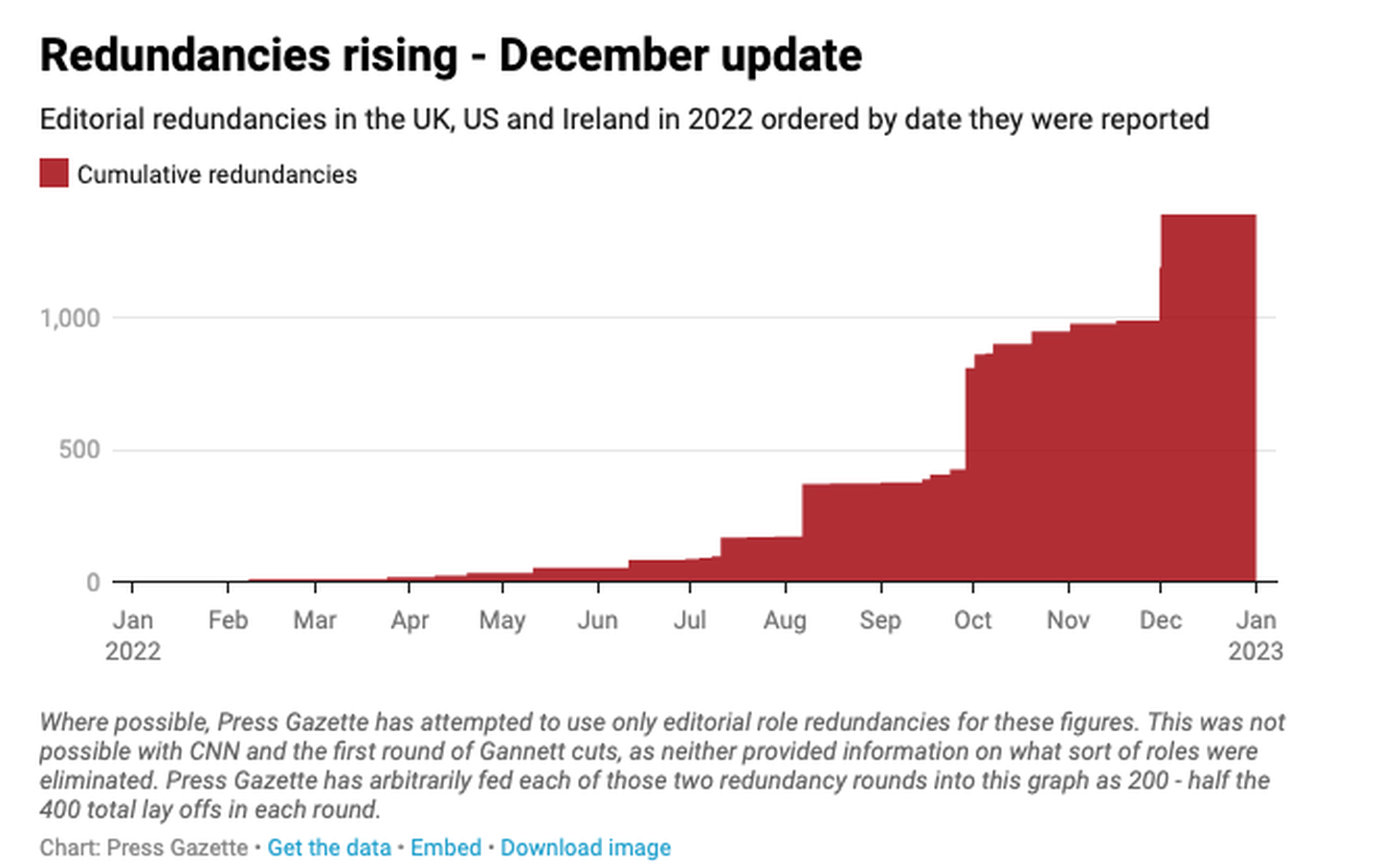-
George Montagu
Situation
"To be honest, the pandemic has, in many ways, been a good thing for the publishing industry. Finally, executives who have been deferring difficult decisions have had to act.”
This comment, from one of the world’s leading media analysts, seemed harsh but fair. Despite the structural decline of print revenues (both circulation and advertising) since the early 2000s, few were willing (or able) to support a meaningful transition to digital whilst their businesses were posting healthy profits.
However, the compounding effect of the pandemic, inflation and the prospect of an economic recession has rightly forced executives to think about the sustainability of their organisations. In the recent Reuters Institute report on Journalism Trends, they reported that “less than half (44%) of our sample of editors, CEOs, and digital leaders say they are confident about their business prospects in the year ahead”.
We are already seeing swathes of cuts across the industry - CNN has closed up to 440 roles, Poynter reported that it was cutting 6% of its 3,440 editorial employees and Buzzfeed plans to cut 12% of its staff (Press Gazette, December 2022)





Response
However, as Rana Foroohar importantly noted, “CEOs beware: cost-cutting isn’t the same as growth - To succeed in the coming downturn, companies should adopt a strategy of investment as well as deleveraging”.
This article should be considered as essential reading for all executives in news publishing. It speaks to a three-pronged approach that has been proven to help companies take advantage of such downturns. Although cuts are one of the three prongs, companies should also aim to: increase investment to grab market share and decrease their financial leverage.
A new McKinsey study that looks at 1,200 public companies in the US and Europe between 2007 and 2011 provides a window into this wisdom. The companies that had the best shareholder return during this period (meaning those in the top 20 per cent) were the ones that did three things.
Lesson 1: Cutting cost judiciously
There are many ways for publishers to judiciously cut costs, without necessarily meaning redundancies. As noted within the Reuters Report, “more newspapers will stop daily print production this year due to rising costs… we may also see a further spate of venerable titles switching to online-only”. Many publishers will have to go further - for example, evaluating their technology stack to ensure that they are maximising the use and benefit of software (e.g. avoiding duplication within the organisation). Where possible, publishers should also leverage experimentation as a way of minimising investment in new initiatives prior to full roll-out (where the majority of cost and time is invested).
News organisations should be very mindful and strategic when cutting workforces. As Foroohar warns, “Consider another transatlantic lesson from the post financial crisis period. American manufacturers slashed workforces following the crisis, but ended up losing market share in Asia to German competitors, who used a furlough system to retrain and upskill workers and repair equipment.”
Lesson 2: Increase investment (capacity allowing)
Publishers should, where possible, aim to capitalise from the economic environment to make astute investments in their organisations that enable future success (especially in relation to digital transformation and new hires). An FT Strategies research study (conducted in 2022 and involving 400 publishing participants) revealed that 89% of “very profitable” publishers planned to significantly increase their investment in original reporting and analysis in the next three years. When speaking to these publishers, they all referenced the importance of re-investment to their success given how central editorial investment is to the quality of the end product.
Another potential area for incremental investment is Product & Technology. Whilst content rightly demands the greatest investment (generally around 35-45% of total costs), those who allocate a higher proportion of their costs to Product & Technology (24%) significantly outperform other publishers (who allocate around 18% to the same area). This highlights technology investment as a key differentiating factor in terms of publisher success.
Lesson 3: Decrease financial leverage
Given higher lending rates, publishers should look to proactively decrease their level of borrowing now to reduce the amount that they pay in interest over the coming years. As Farahoor explains “the overleveraged ones will find themselves boxed in and unable to do much aside from cut costs if they are to keep net income up (if indeed they can).” This is clearly an undesirable position to be in, given the importance of investment in securing future growth (as opposed to standing still).
Summary
News organisations have to acknowledge that a changing economic picture should mean a changing organisation. Those who are brave, and tackle these challenges proactively will be better positioned than their competitors. Now is not the time to “batten down the hatches” but to begin leading from the front.
We have worked with hundreds of new organisations across the world to reinvent their strategy and improve their sustainability (see our case studies). If you would like to discuss the implications of the challenging economic environment on your business - and get advice - please contact me directly or via our online form.




